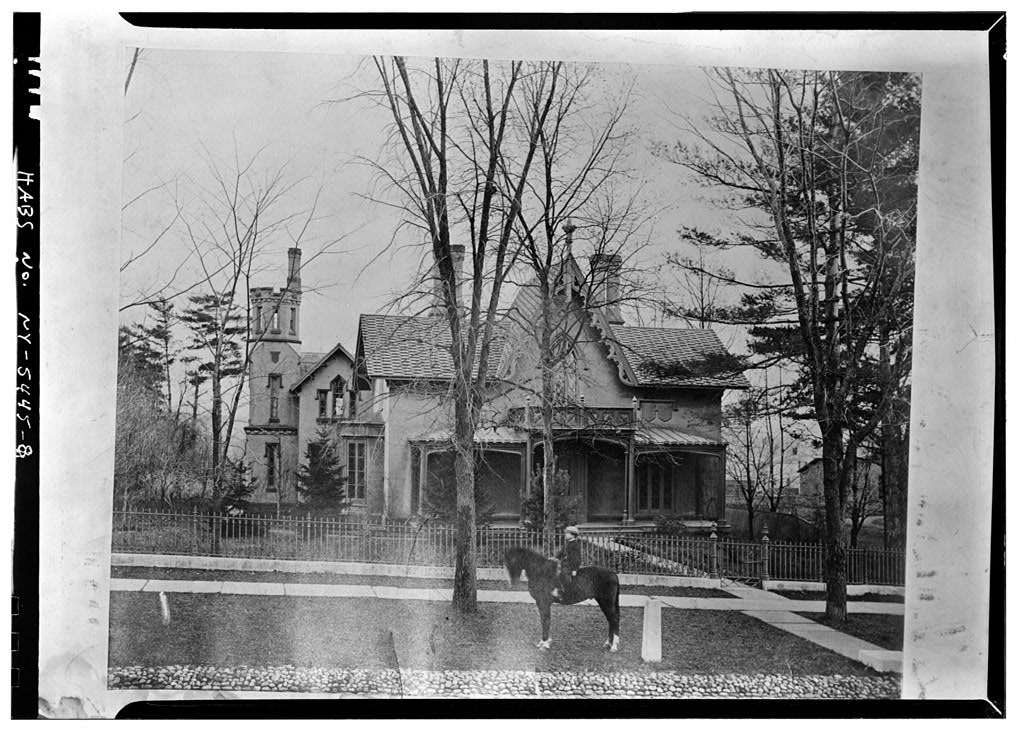The Sedgewick House
|
|
| To compare the two photos, set your bearings by the concrete
walkway in the lower right corner of each picture that runs from the curb to the
sidewalk. This house was named after Charles and Deborah Sedgewick who came to Syracuse in 1842. Charles established the law firm of Sedgewick, Andrews and Kennedy. Both Charles and Deborah were active and outspoken abolitionists. (Continued Below) (Click thumbnail image for enlargement)

Circa 1900 Source: Library of Congress, Historic American Buildings Survey (from Onondaga Historical Association), HABS,NY,34-SYRA,27-8. The "Gothic Revival" Sedgewick House was designed in 1843 by Alexander Jackson Davis, who the authors of "Architecture Worth Saving" call, "one of the most famous architects in the United States." A few years earlier Davis had completed the original Gothic Revival incarnation of the Lyndhurst Mansion overlooking the Hudson River in Tarrytown for former New York City mayor William Paulding. Davis designed many important buildings in both the Greek and Gothic revival styles throughout the country. His works include a number of villas along the Hudson River, the New York Customs House in New York City; and the state capitol buildings of Indiana, North Carolina, Illinois, and Ohio. The New York Metropolitan Museum of Art holds Jackson's original plans for the Sedgewick house. "A graceful porch, pointed windows, slender tracery, high chimney pots and ornamental barge boards contributed to its picturesque 'Gothic Cottage' character," said AWS. "Later additions, which included an octagonal tower and a large paneled dining room, were consistent with the original style. A service building at the rear which housed carriages and stables was designed in the same picturesque manner." In 1858 the Sedgewicks moved further east on James to the top of the hill where they established the "Sedgewick Farm." In 1901 the Sedgewick heirs formed the Sedgewick Farm Land Company and proceeded to develop the land into one of the most desirable residential area in the city. The original Sedgewick house was purchased by a Mr. Barlow who used it as both his residence and place of business. After Barlow's death, the business moved away and the house was vacant. Vandals broke in at this time and did considerable damage to the interior. Just before the building was demolished in 1962, The Historic American Buildings Survey made a photographic record of the house for the Library of Congress. Click below to see the vandalized home just before it was demolished.
Click here to see some pictures taken before the Sedgewick House was demolished.
|

